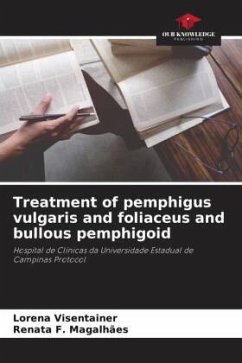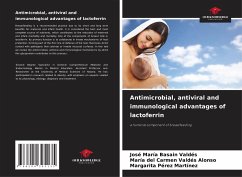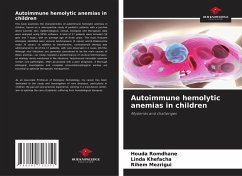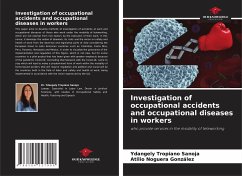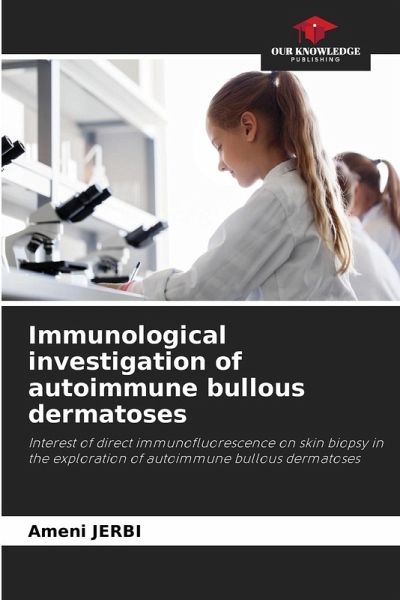
Immunological investigation of autoimmune bullous dermatoses
Interest of direct immunofluorescence on skin biopsy in the exploration of autoimmune bullous dermatoses
Versandkostenfrei!
Versandfertig in 6-10 Tagen
29,99 €
inkl. MwSt.

PAYBACK Punkte
15 °P sammeln!
Autoimmune bullous dermatoses (ABD) are specific autoimmune diseases of the skin and mucous membranes. They are characterized by the presence of autoantibodies (auto-Ab) directed against skin and mucous membrane adhesion molecules, leading to altered function of their antigenic targets, resulting in clinical bullae and/or erosions. Depending on the site of cleavage, a distinction is made between intra-epidermal DBAI, characterized by auto-Ac directed against the structural proteins of the desmosomes that hold the keratinocytes of the epidermis together; and sub-epidermal DBAI, characterized by...
Autoimmune bullous dermatoses (ABD) are specific autoimmune diseases of the skin and mucous membranes. They are characterized by the presence of autoantibodies (auto-Ab) directed against skin and mucous membrane adhesion molecules, leading to altered function of their antigenic targets, resulting in clinical bullae and/or erosions. Depending on the site of cleavage, a distinction is made between intra-epidermal DBAI, characterized by auto-Ac directed against the structural proteins of the desmosomes that hold the keratinocytes of the epidermis together; and sub-epidermal DBAI, characterized by the presence of auto-Ac directed against the components of the dermo-epidermal junction (DEJ).The diagnosis of DBAI is based on clinical, histopathological and immunological evidence (detection of circulating or tissue-deposited auto-Ac). Direct immunofluorescence (DIF) is an immunological technique performed on cryosections of peri-lesional biopsies, based on the detection of Ac deposits and/or complement fractions using specific fluorescein-conjugated Ac.






